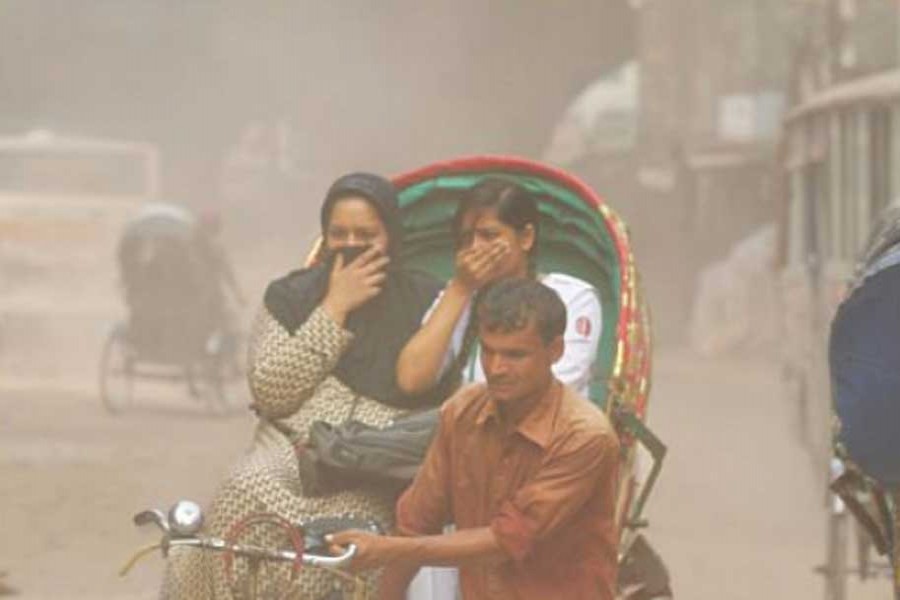Last month, Bangkok was hit by one of its worst environmental crises in recent years. Smog had developed since December last year in the capital of Thailand and surrounding provinces after harmful dust particles of particulate matter (PM) 2.5 range exceeded the safe limit.
As the smog intensified, more and more citizens began to fall sick. Many photos surfaced on social media of Thai nationals who were gravely affected by the pollution. As the situation worsened, the Thai government ordered schools to be shut down for two days. Banks and offices asked pregnant employees and those with respiratory problems to not come to work till the smog cleared out.
Public outcry began to reach a feverish pitch forcing officials of the Bangkok Metropolitan Administration (BMA) and relevant authorities to spray water from the top of high-rise buildings with hoses at the smog and on the streets. There was a crackdown on vehicles emitting black fumes. A close watch was also kept on industrial plants to ensure that they do not release toxic fumes into the air. Strengthened by support from the public, the efforts were fruitful as the smog is reportedly clearing off now.
The crisis forced the Thai Prime Minister Prayut Chan-o-cha to issue an apology to the citizens through a statement on February 01. He also assured long term solutions to air pollution like improvement of integrated public transportation system, fixing and maintaining fuel quality and exhaust fume standards along with encouraging the purchase of hybrid or electric vehicles.
It took Thailand a little over a month to ring the alarm bells and take actions against the smog caused by air pollution. Here in Dhaka, dust particles in the ranges of PM2.5 and even PM10 have been present in most of its commercial areas for nearly seven years. Recent studies have found that the situation is getting worse with every passing year in the absence of effective steps to address the problem.
The findings of two studies on Dhaka's air, conducted over the past two months by the Dhaka University chemistry department, in association with Bangladesh Atomic Energy Commission (BAEC) and University of Iowa, USA, are very alarming. The studies have found that the dust in Dhaka contains 200 times more cadmium than the acceptable level-- twice the acceptable amount of lead and nickel along with arsenic, zinc, chromium, nickel, manganese and copper. These are very dangerous for human health and the environment. Density of PM1, PM2, PM2.5 and PM10 were found to be dangerously high in Khilkhet, Dolairpar and Rampura of Dhaka.
These substances are being released into the air by exhaust fumes from vehicles and toxic fumes from small and medium engineering factories, tanneries, dying factories and others. Traffic congestion and open work of mega projects are also contributing to the pollution.
These harmful substances are affecting human health severely. A study was conducted on 250 children ranging between 9 to 10 years of age and studying in schools located in areas of Dhaka that regularly face traffic congestion. It was found that 16.8 per cent of these children had cough, six per cent were suffering from asthma and 5.6 per cent had headaches. Many children had shortness of breath.
Even before these researches were conducted, Dhaka had been ranked third on the World Health Organisation's 2019 list of most polluted cities.
But there is still hope. Following a writ petition filed by Human Rights and Peace for Bangladesh on air pollution, on January 28, a bench of the High Court ordered the Department of Environment (DoE) to conduct mobile court drives against those responsible for air pollution in Dhaka twice a week. The concerned authorities were also asked by the court to take measures within two weeks to surround areas undergoing development and repair works in order to prevent the spread of dust and spray water in 'dusk-prone' areas twice a day. It can be hoped that the DoE will follow these directives.
Several mega-projects like the Metro Rail, Elevated Expressway, Bus Rapid Transit and others are underway in Bangladesh. When completed and launched, these are likely to improve the public transportation system in Dhaka.
The DoE and related departments can plan to fix fuel and exhaust fumes standards in line with the standards followed by developed countries that have enjoyed success in improving their air quality. Zoning laws can also be considered for residential and commercial areas in order to safeguard citizens from harmful pollutants.
Individual actions of citizens like using public transport, limiting the number of vehicles per household to just one and planting more trees, can also help to resolve the air pollution problem of Dhaka in the long run.


